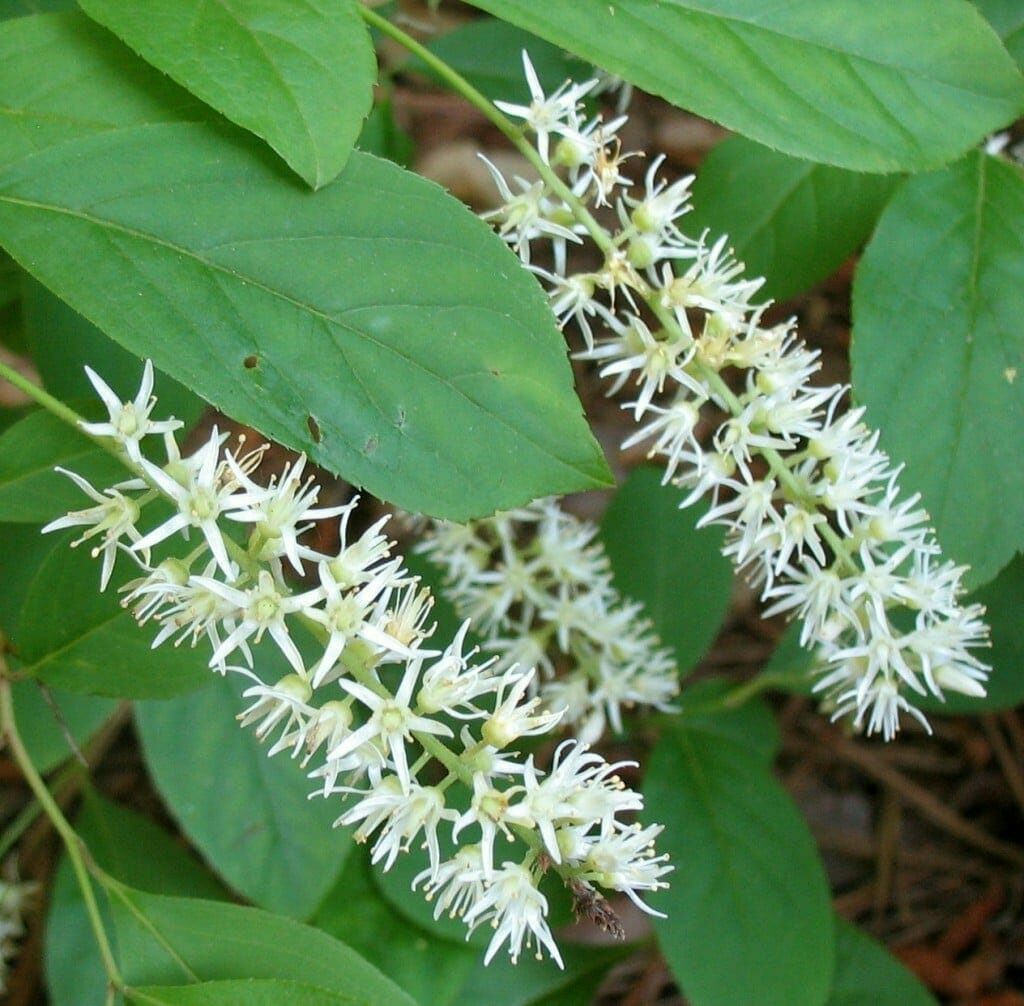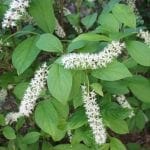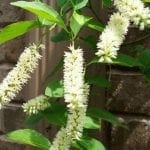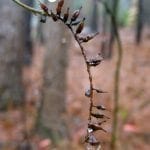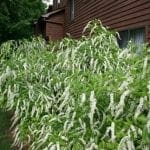- Flowers
- Inflorescence
- Fall foliage
- Seed capsules
- Habit
Virginia sweetspire (Itea virginica) is one of the most attractive and versatile of our native shrubs. Its moderate size, adaptability, and multi-season interest make it a favorite of gardeners. The membership of the Georgia Native Plant Society has selected this worthy native plant as the GNPS 2007 Plant of the Year.
Virginia sweetspire’s slender branches grow in an arching manner. The shrub typically reaches a height of 3 to 6 feet and spreads by underground runners to a similar or greater width. Moist sites encourage this spreading habit. It will remain more compact and dense in sun, while shade produces a rangier, looser form.
In its native habitat, Itea virginica is found in wetlands and swamps and along stream banks and lake edges throughout much of the eastern United States, from Florida to Texas and north to New Jersey and Illinois. It is suitable for gardens in USDA Hardiness Zones 5 to 9.
Although usually found naturally in moist areas, Virginia sweetspire is adaptable to cultivation in a variety of soils and conditions; it is even quite drought tolerant once established. It prefers a slightly acidic humus-rich soil, but can be grown in poorer neutral to alkaline soils as well. Itea virginica is tolerant of a good bit of shade; however, it will bloom more profusely if given sun for at least four to six hours a day.
Virginia sweetspire’s common name comes from its fragrant flowers that are borne in graceful racemes in late spring. These gently drooping, narrow flower clusters are 4 to 6 inches in length and are composed of tiny, white, star-shaped blooms that open sequentially from base to tip over the course of several weeks. Each flower matures to a dry seed capsule that persists into fall and winter.
The leaves of Itea virginica are alternate, simple, and elliptic in shape. They range from 2 to 4 inches in length and have a finely serrated edge. The leaves are a rich green in color with a soft leathery texture and a satin-like sheen. The foliage is most stunning in fall when it displays spectacular shades of yellow, orange, red, or burgundy. This fall display will be most pronounced if the shrub receives ample sunlight. The leaves may persist on the shrub until winter, especially in milder climates.
Several selections of Itea virginica are available in the nursery trade, and most are noted for their fall color. The most well-known selection is ‘Henry’s Garnet’, which boasts fall foliage in hues of reddish-pink to burgundy. Its flower racemes are also larger than those of the species. A more compact version known as ‘Little Henry’ is also available. Other selections include ‘Merlot’, with wine red fall color, and ‘Saturnalia’, which has mixed autumn hues of orange and red.
Virginia sweetspire’s adaptability allows for many uses in the garden. Its tolerance for moist soil makes it invaluable in poorly drained or damp locations, even those prone to occasional flooding. Its white blooms and brilliant fall color will brighten up a woodland edge or hedgerow planting. Because of its suckering habit, Itea virginica is also useful for creek side erosion control and bank stabilization. It is also an excellent addition to the wildlife garden, for the blooms are adored by butterflies and the seeds are eaten by birds.
Another plus that Itea virginica offers is its low maintenance. It suffers from no significant diseases or pests, and minimal garden care is required. Pruning is generally not necessary unless the shrub becomes unruly and a bit gangly with age. If pruning is desired, do so after flowering. The plant can also be rejuvenated by cutting individual canes all the way to the ground. Due to its suckering nature, an overgrown plant can be readily divided. Virginia sweetspire is also easily propagated by cuttings or seeds.
Prepared by Mary Pyne Tucker for the Georgia Native Plant Society
Scientific Name:
Common Name:
Scientific Name Pronounciation:
Plant Type:
Shrub
Plant Hardiness Zones:
Plant Hardiness Zone(s):
Usual Size:
Flower:
Bloom Time Notes:
Leaf:
Fruit:
Wildlife:
Natural Habitat:
Propagation:
Bloom Time:
Sun or Shade:
Companion Plants:
Cultural Notes:

